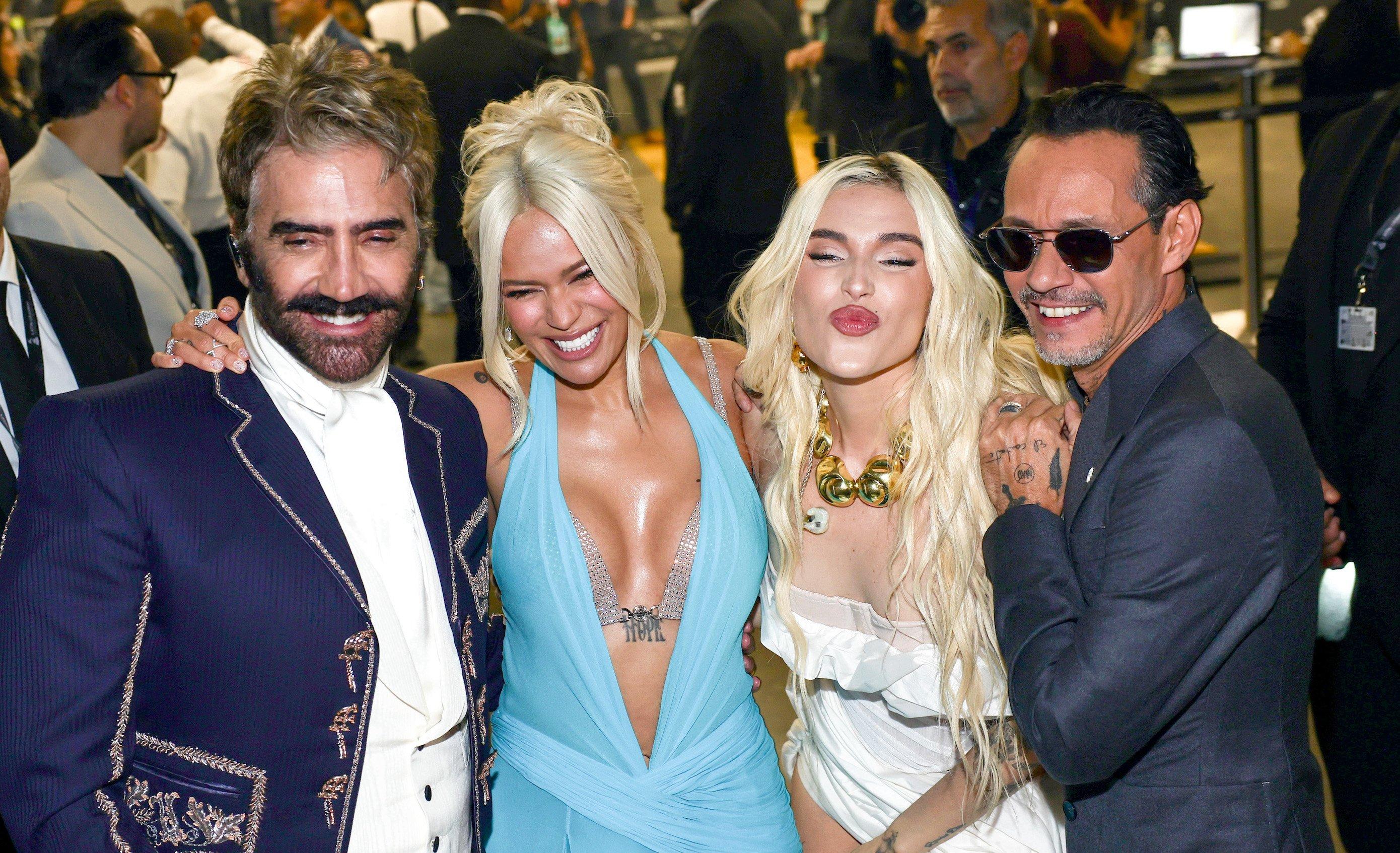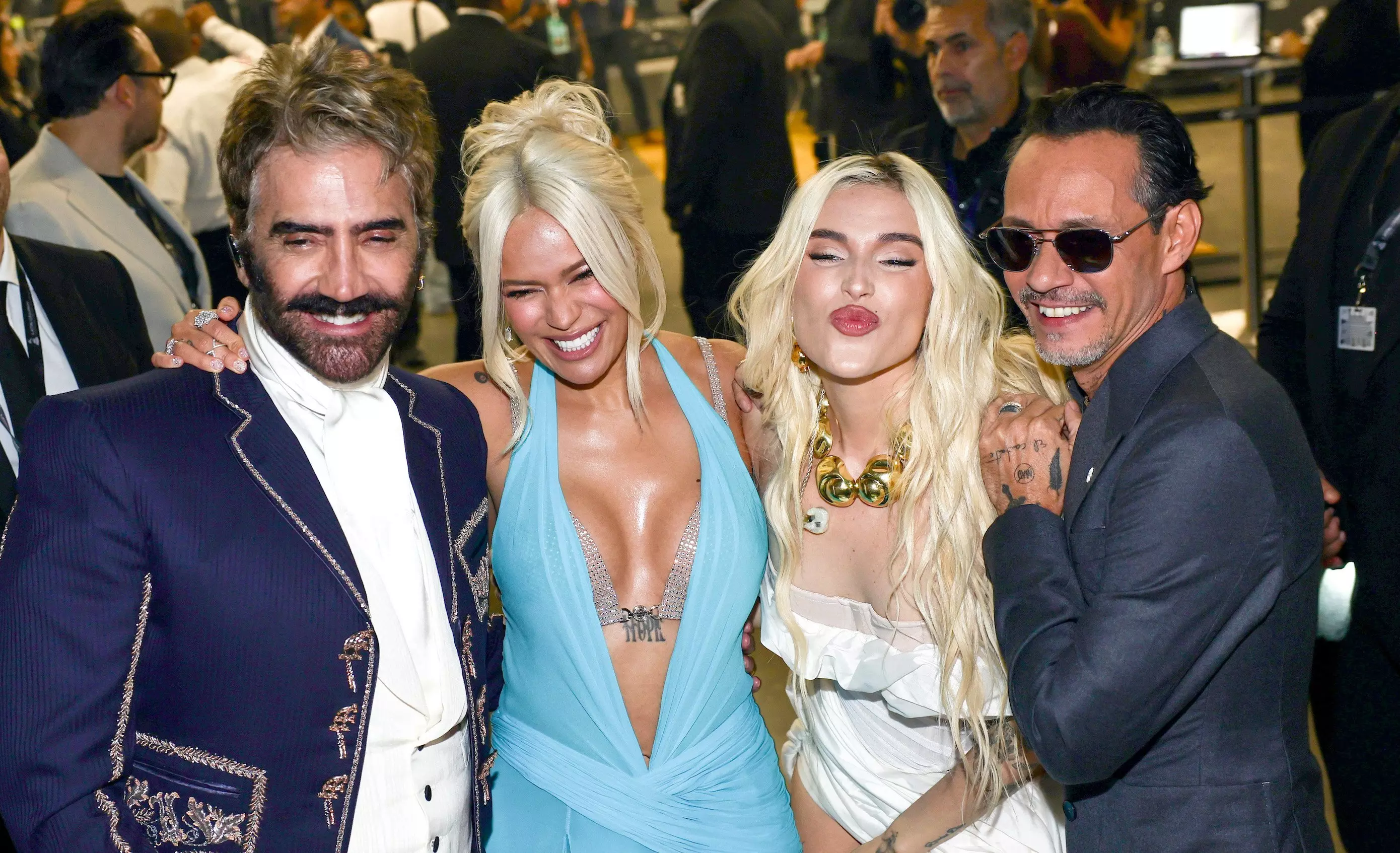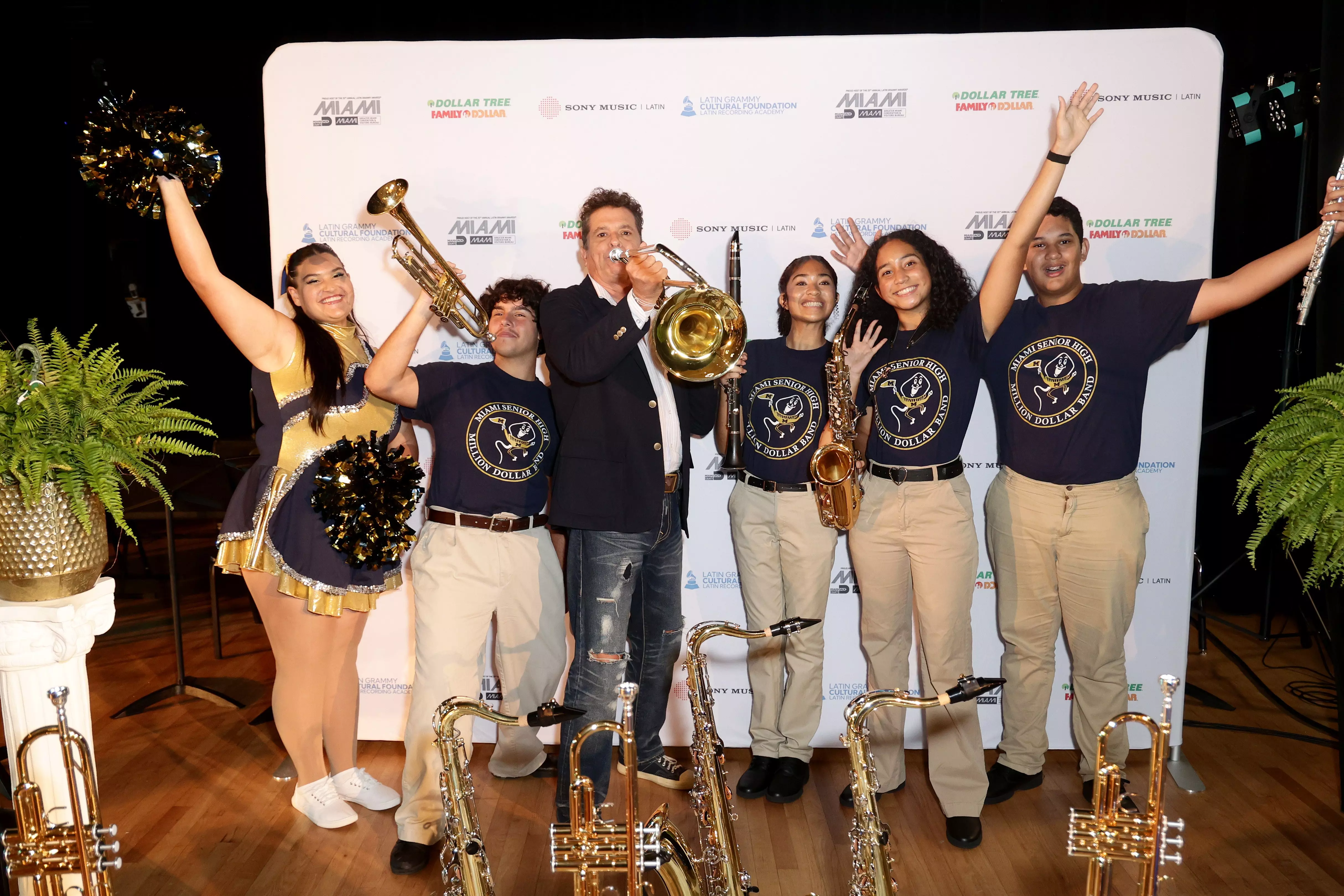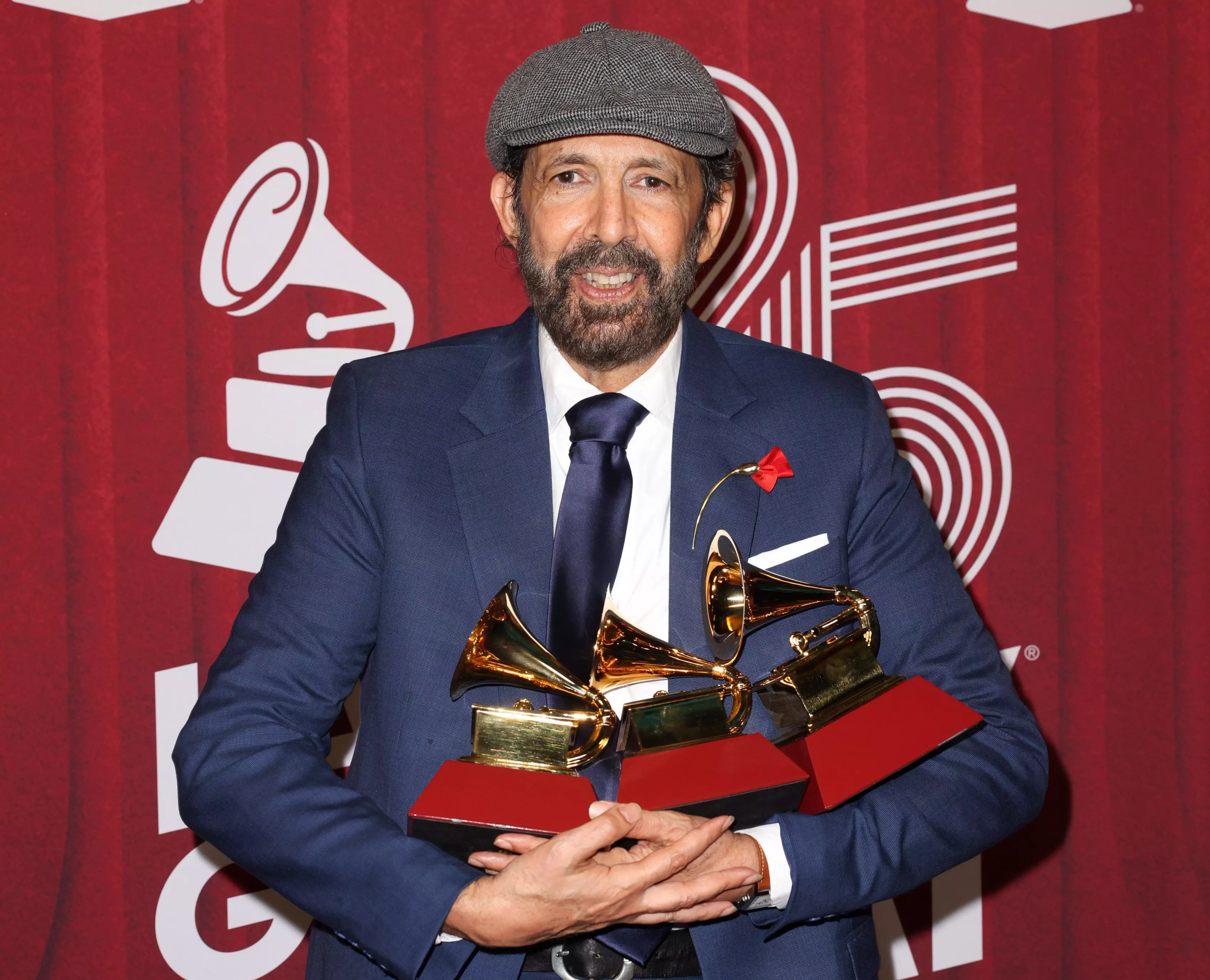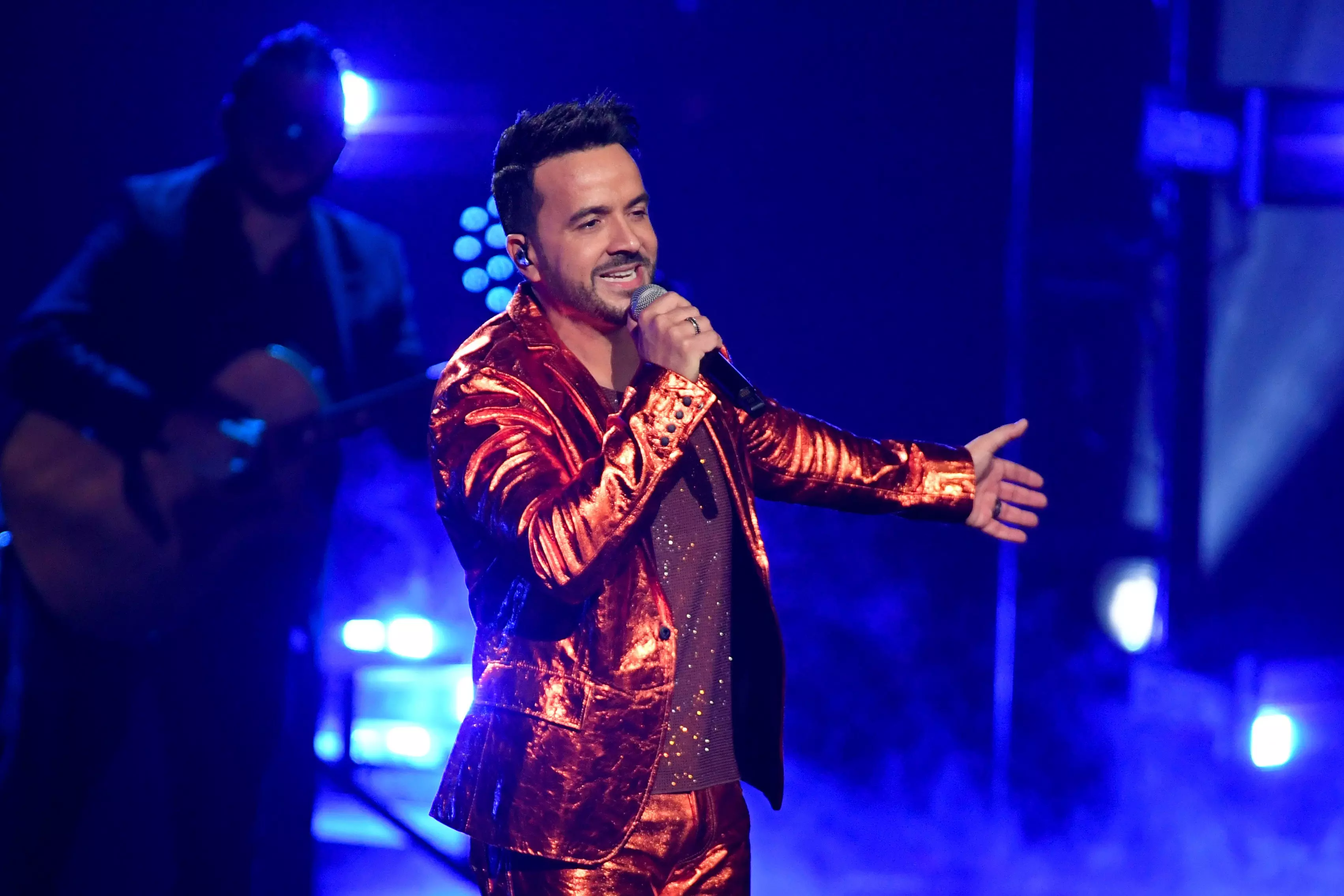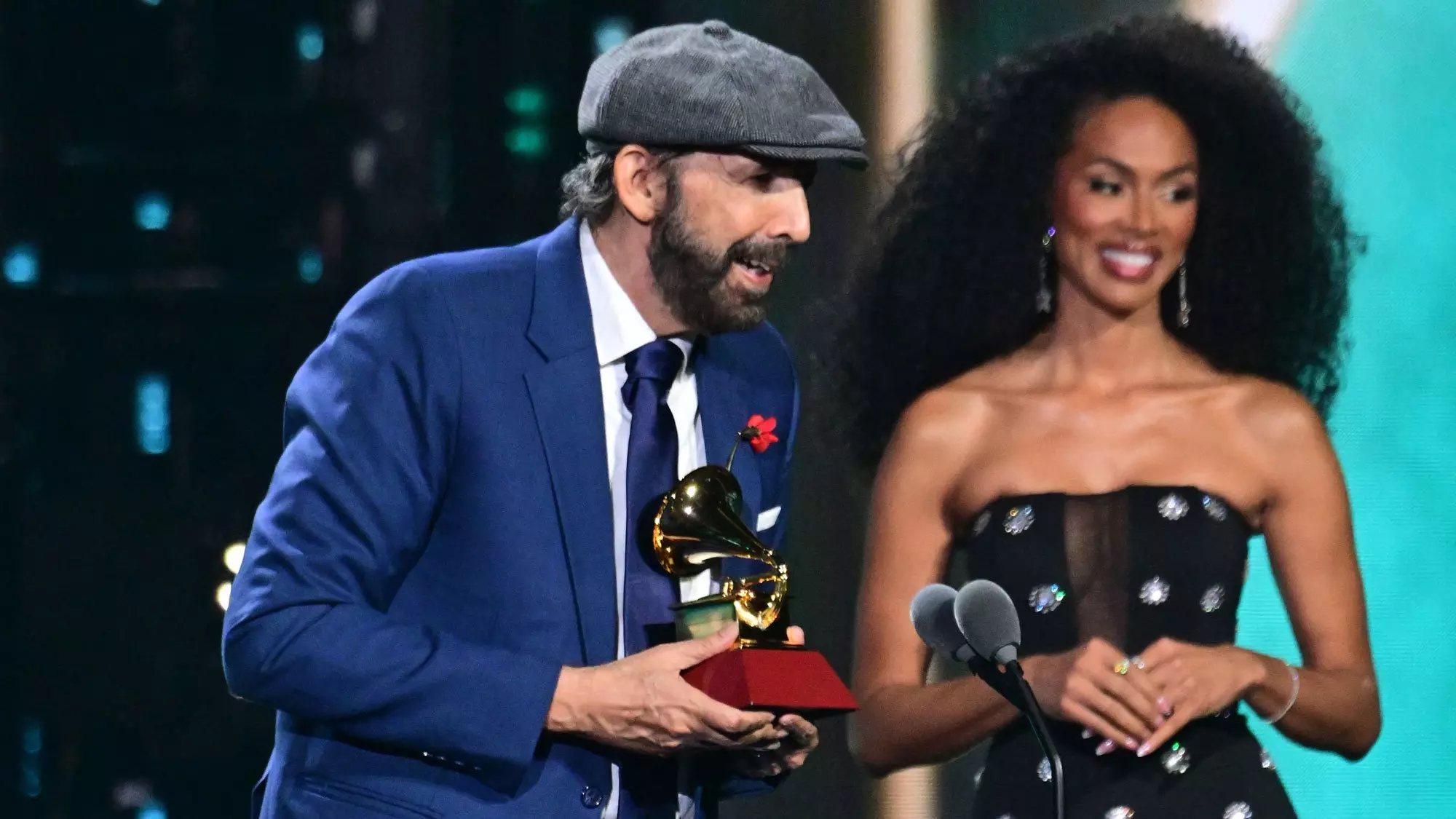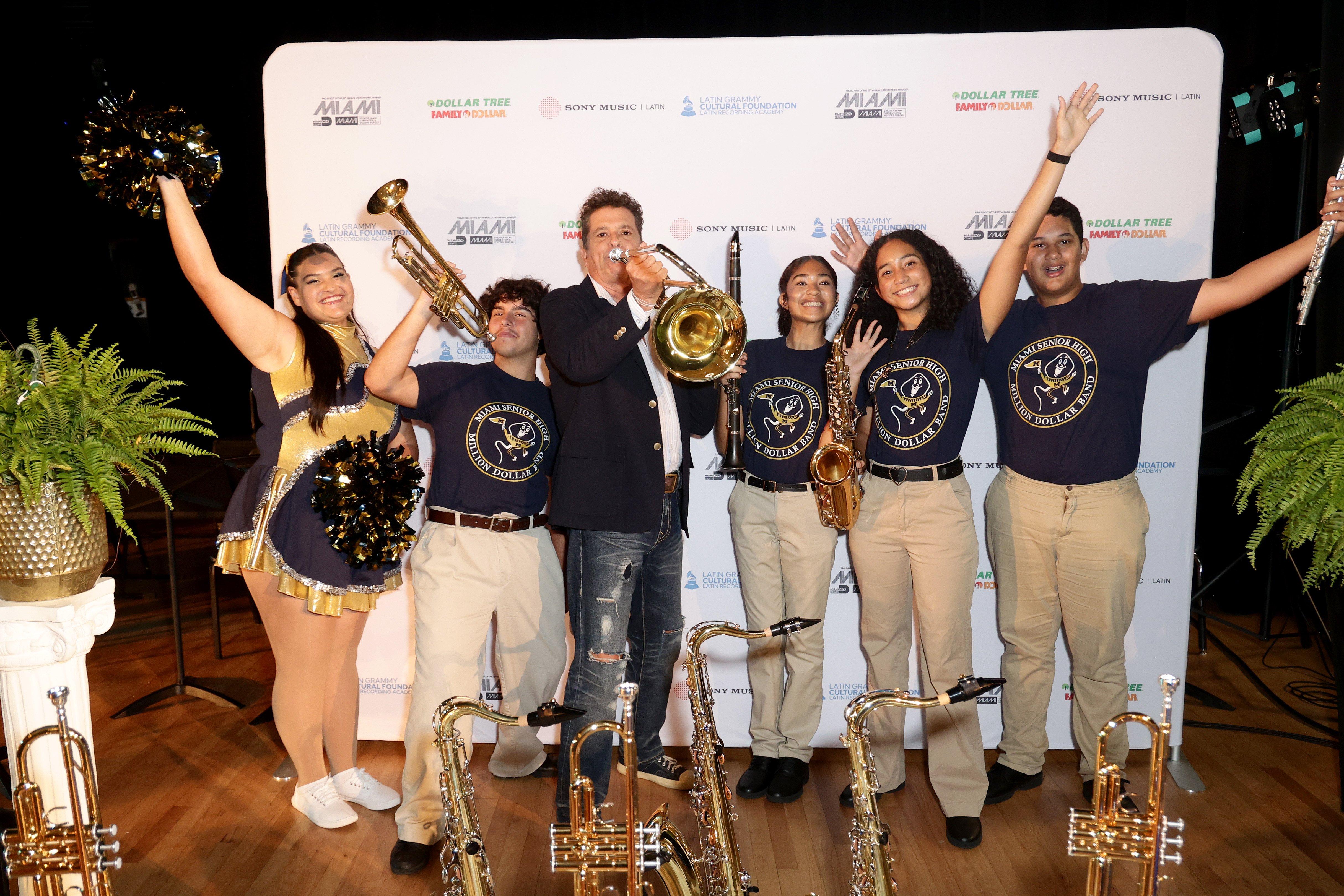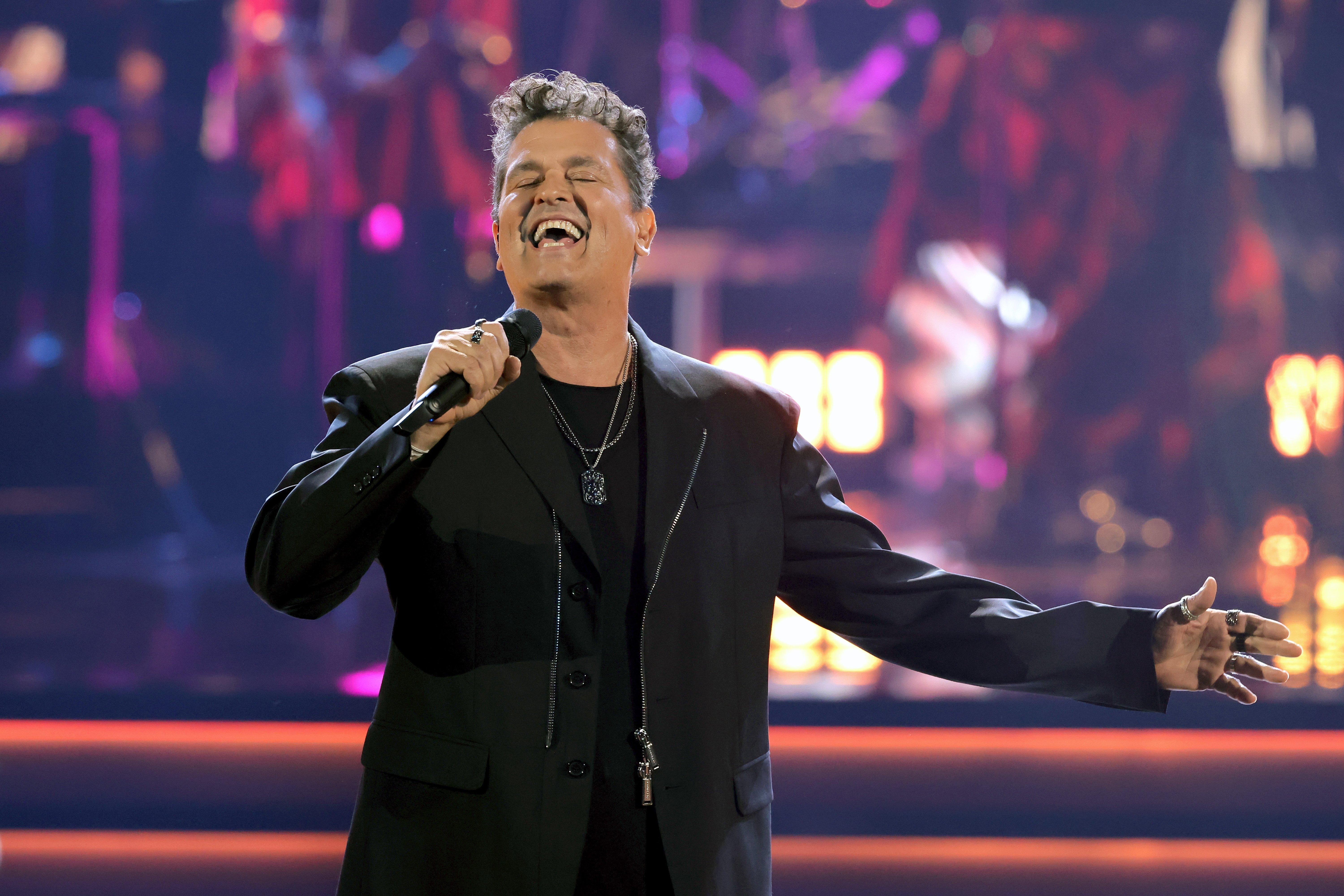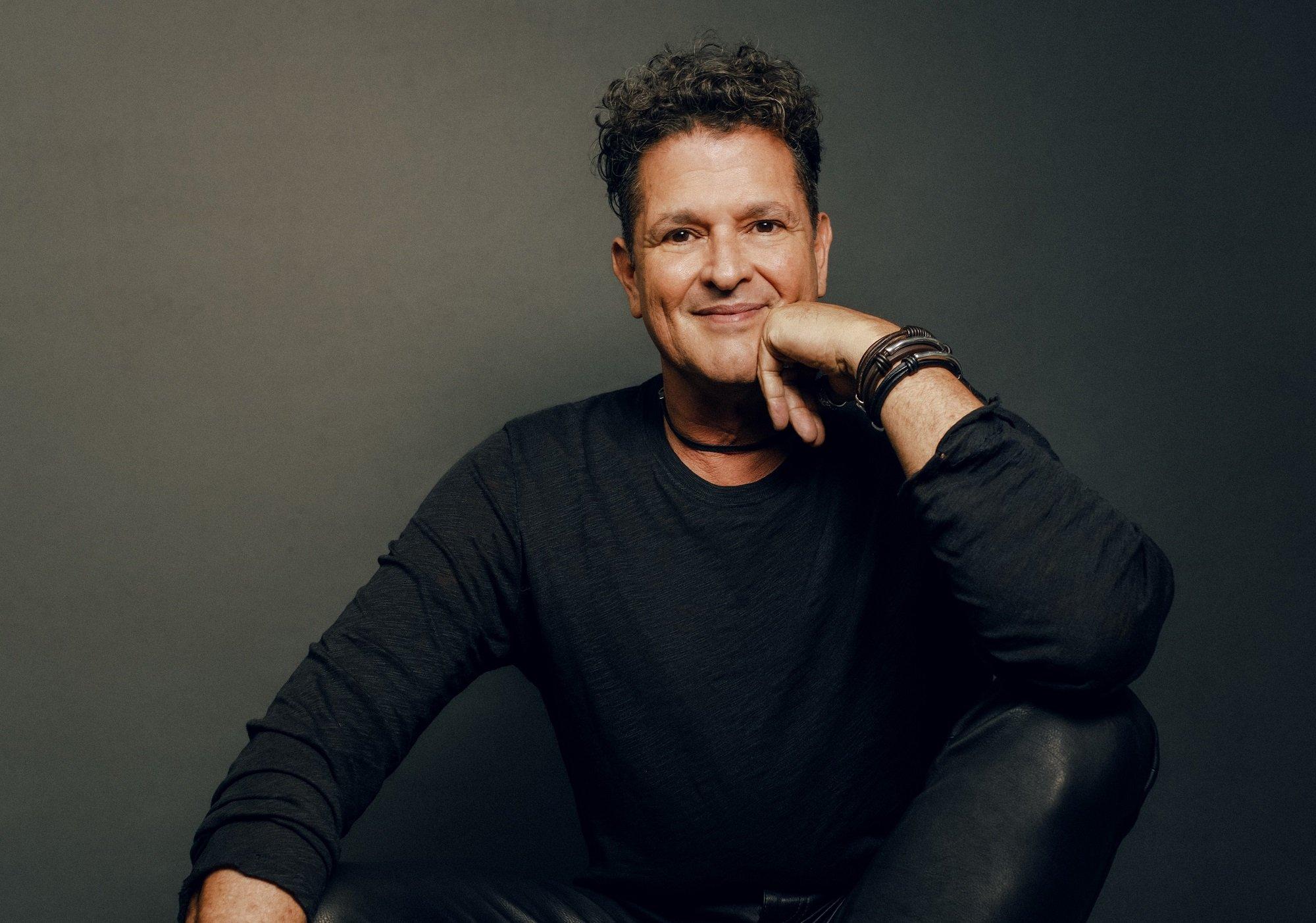Carlos Vives has been integral to culture, entertainment, and music in Latin America for four decades. In the '80s, mothers and tías fell in love with his telenovela roles in, and his music has captivated — and continues to captivate — generations.
In recognition of his sound and magic, The Latin Recording Academy is honoring Carlos Vives as Person Of The Year during its 25th anniversary. Vives is the third Colombian to receive this distinction — following Shakira in 2011 and Juanes in 2019 — and will be honored at a gala ahead on Wednesday, Nov. 13. Vives is also among the recently announced performers at the ceremony, which will air live Thursday, Nov. 14, from Miami.
Read more: 2024 Latin GRAMMYs: See The Full Nominations List
Musically, Carlos Vives forged a fresh path for Colombian sound, creating "el rock de mi pueblo" (my town's rock): the perfect sonic marriage of traditional vallenato and cumbia rhythms with rock and pop instrumentation. This musical audacity resulted in iconic tracks like "La Gota Fría," "Pa' Mayte," "Carito," and "Déjame Entrar," which were inescapable in the mid-1990s and turn of the century.
"When people ask me about the real importance [of my music], it felt 32 years ago that our music didn't just have a past," Vives tells GRAMMY.com in an exclusive interview.
The boldness with which Vives incorporated his musical roots while projecting toward the future became the most potent weapon in his arsenal. These elements proved fundamental in developing a unique sound, transcending borders, and transforming him into a Colombian musical ambassador.
"We can tell young people that they don't have to make music that's successful elsewhere – they have countless instruments to create their own modern, successful music with their identity," adds the singer.
Carlos Vives' story encompasses radio hits, two GRAMMYs Awards and 18 Latin GRAMMYs (ahead of the 2024 ceremony), and over 20 million albums sold, but his real success comes from his philanthropic efforts.
The singer is a faithful advocate for the sustainable development of his hometown, Santa Marta, and the preservation of its natural environment through the Tras La Perla initiative, created in 2015. His social commitment also extends to the next generation of musical creators. In 2016, he founded the RíoGrande music school, where he cultivates a love for music and Colombian identity in children and teenagers.
Ahead of receiving the Latin Recording Academy Person Of The Year honor, Vives spoke with GRAMMY.com about his musical beginnings and his time as a telenovela star. During the interview, he revealed some secrets about one of his most celebrated collaborations. He honored his departed friend and bandmate maestro Egidio Cuadrado, who accompanied him for three decades.
This interview has been edited for length and clarity.
You were born into vallenato, but do you remember the first time you heard one?
These moments are rooted in my childhood. I remember how music would arrive at our home in Santa Marta, coming from the provinces — that's actually why I named my band La Provincia. Over time, I discovered that many of the people who had captivated me with their personalities, songs, and stories came from the villages near Santa Marta.
I remember singing "Sin Ti" by Nafer Durán when I was six — my father taught me that one. It was very popular during my childhood, and I later recorded it as a tribute to him. It's one of those cherished vallenatos that have become part of the genre's history. My connection to this music is fundamentally emotional. At one point in my life, it felt like a lost world to me. In the end, I discovered that it wasn't just about singing something from our tradition that I'd learned as a child — it was understanding that vallenato wasn't just part of the past but needed to be part of the future.
The juglares [traditional troubadours] have been very important in your artistic life. You mention them often in interviews. What did they mean to you?
My uncle Rodrigo and my father are both doctors. My father would travel through La Guajira and knew all these musicians. The juglares always had a special affection for doctors and always found support in them. They would often visit our home. We'd hear stories about Leandro Díaz, who was blind and composed "Matilde Lina," or about Carlos Huerta, the singer from Fonseca, or Luis Enrique Martínez. I grew up listening to doctors, and my father's friends talk about each of them.
To me, they've been the spirits that sustain everything that flows from vallenato music. They were farmers, and that's the direct connection to true folklore. Before the recording industry existed, these genres and musical styles were already there — the same ones the industry later used to make records and cassettes. They were oral traditions.
The juglares, with their popular poetic dimension, ability to improvise, versatility, mastery of Spanish, and social role as communicators and chroniclers, are the foundation of what I consider folklore.
How did your musical career begin? Because it wasn't with vallenato, but with pop.
It started way before that! I had a TV show where I sang ballads called "Pequeños Gigantes" (1983). I value that entire journey. Then, when I arrived in Puerto Rico, I got my first record deal and recorded the albums No Podrás Escapar De Mí and Al Centro De La Ciudad. Since we were raised to love all kinds of music, we've happily sung everything from rancheras to ballads to rock and roll.
These recordings happened alongside your work in telenovelas. How did you start your acting career?
I started out studying pre-med, but one day, I discovered the National School of Dramatic Arts. I enrolled while I was already singing in different venues. I was a waiter, I sang, and then I got a theater role, followed by the children's show "Pequeños Gigantes," which was a great school for me.
From there, I moved on to daytime soap operas and Sunday children's shows until I reached prime time. I starred in "Tuyo es mi corazón" (1985) with Amparo Grisales, "Gallito Ramírez" (1986) with Margarita Rosa de Francisco, and "La mujer doble" (1992) with Rudy Rodríguez. These were shows about Colombian customs and very local stories from when we weren't yet thinking about selling much television internationally.
Without a doubt, the telenovela about composer Rafael Escalona's life was a turning point in your career, and musically, it opened the path to your passion for vallenato. Why was playing Escalona so transformative for you?
It wasn't a coincidence because the company that gave me the role knew my work, and I sang vallenato. When the project came up, the executives immediately thought of me. They told me I had to learn over 40 of Escalona's songs. When I started exploring the repertoire, I realized I knew all the songs from childhood. They had been dormant for 30 or 40 years.
Escalona went to school with my father; he was a beloved and well-known figure. His songs were the first to cross Colombian borders, reaching Spain, Central America, and the Caribbean.
Incorporating vallenato into your sound was a deliberate choice. You call yourself the son of vallenato. Why do you say this genre is your father?
Absolutely! You discover things when you immerse yourself in provincial folklore like vallenato.
When you understand Colombia's geography, you know why I say vallenato is the child of cumbia. These are ancestral patterns — vallenato has mysteries in its percussion, where its potential for modernity lies.
When the first bassist added a bass line to vallenato, it became radio-friendly, commercial and a musical genre. Before that, it was oral tradition: box drum, guacharaca [percussion instrument similar to guiro], and guitar. Then accordions came along, but when someone added an electric bass, that became my rock and roll. From that first bass line, people started applying cumbia patterns from vallenato to the drums and keyboard playing. It's a new form of tropical music.
Composer Leandro Díaz told you that you had a treasure with Clásicos de la Provincia. The album was a total revolution and marks the birth of the Vives sound. What was the work behind that production like?
I knew that if I wanted to pursue my rock and roll and pop through this path, I wouldn't be the traditionalist, though I wouldn't disrespect the original patterns either. People said Carlos Vives mixed vallenato with rock, but that's not what happened.
If I interpret a vallenato box drum pattern on a bass or electric guitar with a cumbia groove like in "La Gota Fría," it naturally sounds like rock. The path I chose was to find my town's rock. Ultimately, I was searching for my modern music through our traditions.
I started with vallenato, but its origins led me down a river that flows into the Magdalena, the capital of cumbia. That's why we applied cumbia drum patterns for the first time in "La Gota Fría."
Déjame Entrar earned you your first two Latin GRAMMYs and made you the first Colombian to win a GRAMMY Award. That production also spawned hits that are now Latin music icons. What do you remember about that first ceremony where you emerged victorious?
I have some funny stories about that. I've both enjoyed it and suffered through it. [Two years] earlier, I received three nominations [at the first Latin GRAMMY Awards] and didn't win anything. I told myself: Did you think it would happen right away? That you'd win everything on your first try? No, man, keep working.
I was always surprised to be nominated for anything, given how natural the path I chose was. I didn't have many of those dreams because my motivation was different, and besides, the industry kept telling me I wouldn't get anywhere on this path. I was surprised when The Academy started noticing me.
Twenty years ago, you released El Rock de mi Pueblo, another of your iconic albums that gave name to the Vives sound. Did you expect this style and album to be more alive two decades later than ever?
No! Mainly because it's such an experimental album. It was the last album of a moment when everything went dark. That album was beautiful because it was about playing, being very daring, and telling rock culture, this is your rock, and this is mine. It's almost aggressive to say that my rock is different from yours.
I knew the album had to be called El Rock de mi Pueblo. I started experimenting, and sometimes, I wasn't happy with anything, but I knew I was on the right path. The message is clear. I knew I was sending the right message.
"La Bicicleta" with Shakira is another of your global hits. The track won Song Of The Year and Record Of The Year at the 17th Annual Latin GRAMMYs. Plus, bicycles are part of your life. Tell me the story behind the song.
For Colombians, the bicycle has been a passion since childhood. In the neighborhood, it was crucial; it was always a symbol of freedom. I was writing these crazy ideas, and the Sony president loved them and sent the song to Shakira. With her infinite creativity and musical ability, she created incredible things for it. She added lyrics and some accordion parts that my compadre Egidio Cuadrado had invented.
Then, she conceived a spectacular part where she included me in the story. And she changed the name of the song. In my nostalgia, I had called it "Vallenato Desesperado," but when she started working on the music and sending me messages, she always said, "Here's La Bicicleta."
*Carlos, why are Colombia's vast rivers and wetlands important to you and your country's musical legacy? You even dedicated two albums to your country's rivers, Cumbiana and Cumbiana II.*
Because that's the origin, there were no planes or highways. All our mixing, evolution, and development, even of pre-Hispanic cultures before Spain's arrival, happened because they were connected through rivers. That's why they were amphibious cultures.
Cumbia was a funeral areito of the Chimilas, the amphibious Indians who lived where the river grew wide, in what we call ciénagas [marshlands]. That's the origin of cumbias and the pattern we know with that syncopation, with that upbeat, which was in America before Europe's arrival.
You understand that vallenato is the child of cumbia when you realize that the César River, which tells vallenato stories, flows into the Magdalena River. Rivers are the country's blood, our blood.
2023's Escalona Nunca Se Había Grabado Así earned you your first Latin GRAMMY for Best Cumbia/Vallenato Album, plus the first Latin GRAMMY for your label, Gaira Música Local. What did it mean to you that an album where you return to your roots was awarded so significantly?
First, I was very worried because I was competing with Silvestre [Dangond]. [Laughs.] It was crazy — I couldn't believe I had recorded Escalona so many years ago and was now competing with Silvestre, who had just made the album tribute to [composer] Leandro Díaz.
It was pure joy because it was also my compadre Egidio's dream. It was special because it is also my last recording of him from our final trip together through Provincia de Padilla, which we often toured by bicycle or car while filming scenes.
We returned 30 years later at a time when my compadre had a health problem, from which he never recovered. It was a last breath he gave us, a gift. That final concert in Bogotá, where he could only perform two or three songs because he was very ill, was incredible. He left us a memory, and I have it all recorded.
What legacy did Maestro Egidio Cuadrado leave with you?
My compadre Egidio always represented the province, so I said when he died, the province had died. His great value was that he never stopped being a farmer or a guajiro.
His great value wasn't his virtuosity or innovative accordion techniques but his connection to authentic spirits. He was a true farmer who picked coffee, and although life led him to travel the world with me and live very comfortably, he never stopped being humble.
I always saw in my compadre Egidio that connection to our roots. I turned around and saw that in my small-town rock band, I had an authentic farmer and a vallenato king from Villanueva — it couldn't get better. I always gave him his place as king. In the end, the vallenato that the industry enjoys today is connected to the farmer, nature, and folklore.
The Person Of The Year Gala will be full of surprises for you. How are you preparing?
I start thinking a lot because I'm nostalgic; I'm romantic. My friends in school used to call me Libertad Lamarque because I cried a lot. To explain to young people, Libertad Lamarque was a famous actress when I was a child, and she cried in all her movies.
There's something emotional about Miami. The Latin GRAMMYs were born there. [I remember] the musical style in Miami when I arrived, the family that opened their arms to me, with Cuban, Puerto Rican, Dominican, and Panamanian artists... I arrived into a family. It's been 25 years since that first experience of being surprised by Miami and thinking, What am I doing here? Being surrounded by Emilio Estefan, Celia Cruz, all the pop stars, and me in the middle of it all.
When the Cubans heard my vallenatos, they knew I was their cousin; they loved me very much, supported me, and played my music. That's what Miami has: It shows us familiarity, even those who don't speak Spanish. So many things that connect us have been built there with spirituality, love, and tenacity from the union of two worlds.
I want it to be a celebration of Miami. I want it to be a celebration for everyone: the new generations, those who came after us and are succeeding, and all of us to recognize ourselves in this celebration.
Latest In Latin Music, News & Videos


